These women of the fashion world share their predictions of where the Eco-Fashion industry is headed in 2016.
AMY HALL (DIRECTOR OF SOCIAL CONSCIOUSNESS, EILEEN FISHER)
As an industry “insider,” I see three game-changing fashion trends taking deeper root in 2016.
- Fiber recycling: This is the year when we will find out which recycled-fiber developer will be the first to offer viable fabric suitable for mass-market apparel. So many are reaching for the golden ring. And it couldn’t come soon enough, what with deforestation and water scarcity threatening the future of virgin fibers as we know them.
- Living wage: After more than a century of stagnant wages for our garment-industry workers, there are murmurings of change on the horizon, such as the London living wage movement, the U.S. minimum wage campaigns, non-governmental organization activism, and brand acknowledgement of the severe impact that purchasing practices have on supply-chain compliance. Garment workers shouldn’t pop the champagne yet, but higher wages are in the air.
- Fast fashion: Nothing we do will really matter until we can loosen the consumers’ grip on “fast fashion” and get her to think of apparel as an investment. We repair our cars, our iPhones, and our furniture. Why not our clothes? Is 2016 the year for this tide to turn? I wish I could say yes, but I fear we have more sales to make, more clothes to discard, more charity donation bins to fill and more trends to watch. Oh, like this one.
BIANCA ALEXANDER (CREATIVE DIRECTOR AND HOST, CONSCIOUS LIVING TV)
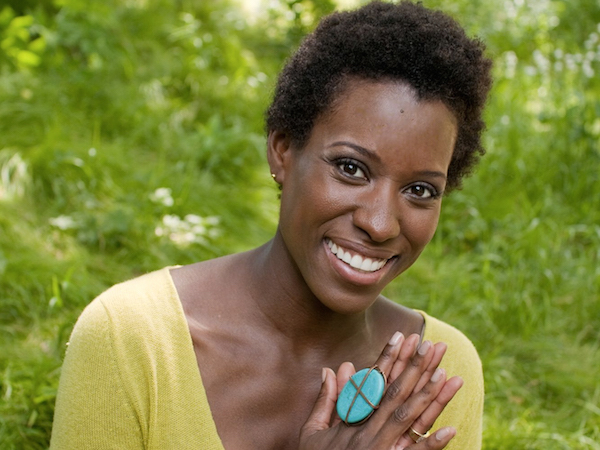 According to the U.S. Environmental Protection Agency, Americans generate 82 million pounds of textile waste per year, amounting to about 82 pounds per person annually. Guess how much ends up in landfills? A whopping 85 percent, or 70 pounds per person. Given these numbers, and the heavy toll manufacturing new clothes—even if produced more sustainably—has on the Earth, our water sources, and greenhouse-gas emissions, the most promising eco-fashion trend for 2016 will be wearing secondhand clothing.
According to the U.S. Environmental Protection Agency, Americans generate 82 million pounds of textile waste per year, amounting to about 82 pounds per person annually. Guess how much ends up in landfills? A whopping 85 percent, or 70 pounds per person. Given these numbers, and the heavy toll manufacturing new clothes—even if produced more sustainably—has on the Earth, our water sources, and greenhouse-gas emissions, the most promising eco-fashion trend for 2016 will be wearing secondhand clothing.
Instead of dumping old trends in the trash and replacing them seasonally with brand new threads, this year conscious fashionistas will help the Council For Textile Recycling reach its goal of zero waste by 2037. This means only buying pieces that have lived at least one previous life cycle, taking better care of the garments we love, and regularly editing our closets by recycling —not throwing away— items that no longer fit or bring us joy.
In a time where creativity and originality are paramount, socially conscious thrift stores like Goodwill and the Salvation Army will offer consumers the chance to flex their sartorial muscles and construct quality, one-of-a-kind wardrobes no one else on the block could possibly mimic— and all at a serious discount. What could be better? Fortunately, this won’t hamper fabulous style.
Old is new again on the runways, as designers re-imagine vintage looks popularized in bygone eras from the ’40s, ’50s, ’60s and ’70s. With historically timeless silhouettes at top of mind and the growing availability of swapping, bartering, consigning, and upcycling both online and via brick-and -mortar outlets (even H&M has gotten in on the action), rocking secondhand duds will be 2016’s most stylish antidote to “fast fashion” and what I’ll be wearing again all year.
REBECCA BURGESS (FOUNDER, FIBERSHED)
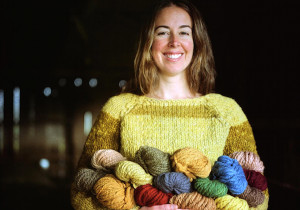 Post-Paris and -COP21, we stand in a new era of global agreement and commitment about our climate. How will that affect fashion? Twenty-five countries and 75 nongovernmental organizations signed onto the 4/1000 Initiative, and the number continues to grow. Regenerative agriculture (think the opposite of your age-old Green Revolution, or GMO follow up) has now been identified for the first time as a key solution to the climate crisis.
Post-Paris and -COP21, we stand in a new era of global agreement and commitment about our climate. How will that affect fashion? Twenty-five countries and 75 nongovernmental organizations signed onto the 4/1000 Initiative, and the number continues to grow. Regenerative agriculture (think the opposite of your age-old Green Revolution, or GMO follow up) has now been identified for the first time as a key solution to the climate crisis.
The French agricultural minister has stated, “if nations can increase the organic matter in the soil by four parts per thousand. This would be enough to offset all carbon emissions.” Scientists agree, and initiatives and campaigns are blooming.
Here in my home region, Project Drawdown is emerging as a champion of land-based solutions to climate change. In 2016. we will hopefully see a strong response from fashion to align with this soil carbon building movement. Clothing that comes from organic and regenerated soils can return to the soil. via compost. to improve yields for the next generation of fiber crops. The Fashion Institute of Technology brought this into focus for their students quite recently, and we’ll likely see this kind of soil-to-soil fiber system expand into the lexicon.
The idea of “cradle to cradle” will begin to acknowledge the roots and soil as a starting and ending point. How your clothing was farmed may very well become part of the life-cycle assessment for a garment. An increase in the effort to divest from fossil fuels and fossil carbon extraction will move us increasingly away from synthetics, while renewing our attention toward natural-fiber systems with a new focus on building soil carbon, fertility, and water-holding capacity in the remaining arable lands that grow our clothes.
I see 2016 as a year to develop the structure and planning required to scale soil-to-soil fiber systems. It’s a year for coming together, a time to build a broad set stakeholders that are aligned to help us look good while having our feet firmly planted on this beautiful earth.
LEANNE MAI-LY HILGART (DESIGNER, VAUTE)
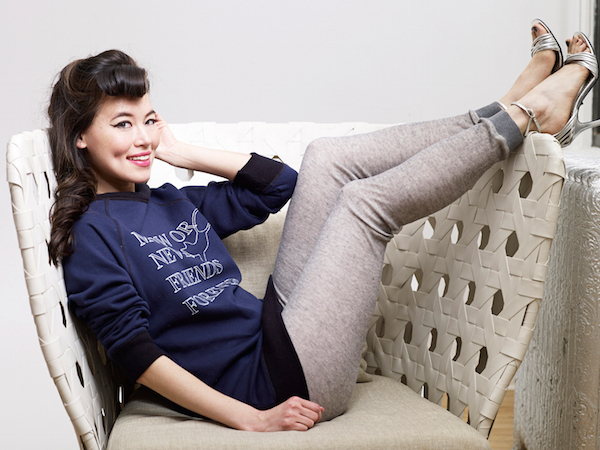 I was that weird kid raising money for the local animal shelter and setting up recycling programs in grade school, then drinking that beany soy milk from the Chinese market when I went vegan, so there’s nothing that makes me happier than seeing how far things have come, and feel the momentum of where we’re going. For the past couple decades, it’s been something to see more people question what they purchase and consume led by social norms and pressures traditions, magazines, and advertising create.
I was that weird kid raising money for the local animal shelter and setting up recycling programs in grade school, then drinking that beany soy milk from the Chinese market when I went vegan, so there’s nothing that makes me happier than seeing how far things have come, and feel the momentum of where we’re going. For the past couple decades, it’s been something to see more people question what they purchase and consume led by social norms and pressures traditions, magazines, and advertising create.
And then in the past five years, it’s been amazing to see compassionate and healthy living start to accelerate and become more popular, where a vegan restaurant in Los Angeles is booked solid on a Tuesday night with mostly people who probably aren’t entirely vegan, but who are becoming more conscientious of what they’re eating and how it affects their bodies, the animals, and the Earth.
When I attended the Farm Sanctuary Gala this year at the Plaza Hotel, where Jon and Tracey Stewart announced their new animal sanctuary, I sat there really taken aback by what a mile marker this was for how far things have come and are going. Thoughtful living and thoughtful business is becoming a priority, and after the Rana Plaza factory collapse, people are starting to think past food to apparel and how it affects the world. as well. After food is fashion, which affects so much of the world’s resources, as well as workers’ and animals’ lives. I’m so excited to see this conversation of ethical fashion continue to grow and tip and bring in more voices and more people who are excited to make a difference with what they buy and wear.
For Vaute, after bootstrapping for six years, we had our first investor fundraise in 2015 as one of the first private fashion companies to raise money publicly, made possible by the Jumpstart Our Business Startups Act of 2012 and 2013, and CircleUp.com. This meant I could reach many female investors and conscientious investors who want to make a difference with their finances and have an inspired vision for the future of fashion. We were able to hire some key team members to keep up better with demand, develop vegan eco-conscious locally made sweaters in a waste-free process, test out two retail markets, and also launch gowns made of recycled plastic bottles. This year, we’re gearing up to do our Series A raise and ready to set a new standard in fashion with the right partners.
CHRISTINA DEAN (FOUNDER AND CEO, REDRESS)
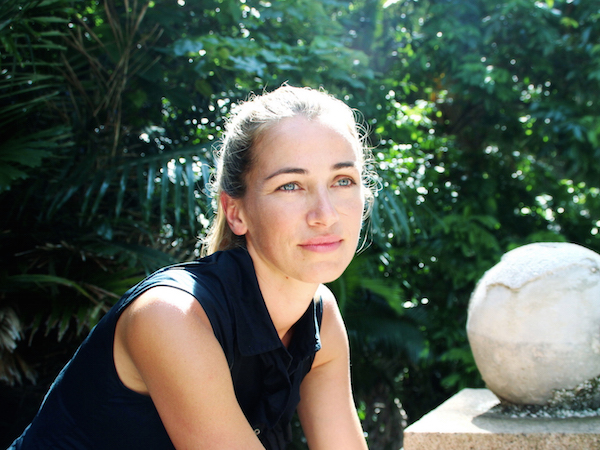 For 2016, the ongoing focus on waste reduction will intensify as unabated momentum continues about the urgent need for seismic change in the fashion industry. So we’ll be hearing more about shifting toward a circular-economy model; but the critical question is whether we can scale up discussions into real and tangible action.
For 2016, the ongoing focus on waste reduction will intensify as unabated momentum continues about the urgent need for seismic change in the fashion industry. So we’ll be hearing more about shifting toward a circular-economy model; but the critical question is whether we can scale up discussions into real and tangible action.
As part of the battle on textile waste and the race to capitalize on this valuable resource, we’ll see continued experimentation with recycled fibers and more entrepreneurs entering the arena. If this all goes to plan and better recycling systems and technologies continue to develop, enabling the capture of wasted resources before they hit landfills or incinerators, we could be lucky enough to see textile-waste rates decline.
At the same time, most consumers are still in the dark about their responsibility to be part of the positive change needed, so the decline in textile waste is likely to be disappointingly slow.
KIRSTEN BRODDE (CAMPAIGN LEADER, DETOX MY FASHION, GREENPEACE)
I predict that more people will demand responsible business models from fashion companies in the near future and that sustainable fashion will begin to transform the industry. The 33 global companies that have signed the commitment to Detox will deliver visible progress in the next year and break the business-as-usual attitude that has dominated the industry far too long. We’ll see a rise in the repairing, lending, and sharing of clothing.
These forward-thinking trends have the potential to slow down the resource-hungry and destructive disposable-fashion model that turned clothing into a throw-a-way commodity that is no longer valued. This will all begin with small fearless innovators teaming up with Greenpeace to encourage larger businesses to follow suit and to offer customers more choices than buying new.
Specifically, the Detox campaign will focus on perfluorinated chemicals (PFCs), hazardous chemicals that may severely harm our bodies. Released through the production phase of fashion and outdoor gear. PFCs can be found everywhere, from drinking water to human blood. You can see why we are so concerned with these chemicals at www.detox-outdoor.org.
LIVIA FIRTH (CREATIVE DIRECTOR, ECO-AGE; CO-FOUNDER, GREEN CARPET CHALLENGE)
2016 is going to be the year where we will take fashion back for what it is: beautiful clothes made with love and quality. We will all adopt the “30 wears”rule (buy only things which you can commit wearing a minimum of 30 times), so that we get more fashion mileage per dress.
“Fast fashion” will slowly die as we will start realizing they have taken us for a ride for too many years, addicting us to buying too fast and too cheaply, and ending up spending much more money than we would normally do on things that not only do not last in our wardrobes, but are made with the suffering of the people at the end of the supply chain. Fashion and disposability will finally not be in the same sentence, and we’ll be proud to wear the same things multiple times while sporting the beautiful stories of the clothes we buy.
ORSOLA DE CASTRO (CO-FOUNDER, FASHION REVOLUTION; CO-FOUNDER, ESTETHICA; CO-FOUNDER, FROM SOMEWHERE, RECLAIM TO WEAR)
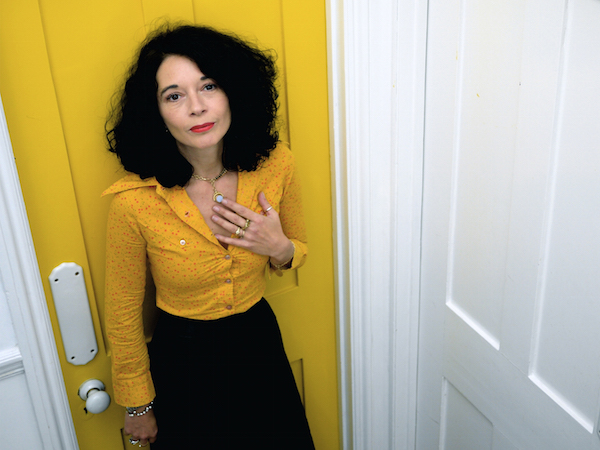 If 2014 was eye-opening time, and we saw the fashion industry finally acknowledging that change must happen, in 2016, post-COP21, it’s time to prove that you mean it. Watch out for “greenwashing” in every shade of green, from deep olive to fluorescent, and learn to know your true heroes from the ones donning a disguise.
If 2014 was eye-opening time, and we saw the fashion industry finally acknowledging that change must happen, in 2016, post-COP21, it’s time to prove that you mean it. Watch out for “greenwashing” in every shade of green, from deep olive to fluorescent, and learn to know your true heroes from the ones donning a disguise.
That’s all it takes: think, learn, act. That’s why we want you to become a Fashion Revolutionary: so you will be curious, you will find out and you will do something. In 2016, the noise of all this thinking, asking questions such as #whomademyclothes, and all this action—it will be deafening.
KATHLEEN TALBOT (DIRECTOR OF SUSTAINABILITY AND BUSINESS OPERATIONS, REFORMATION)
2015 was a monumental year for sustainable fashion. The release of The True Cost felt like our industry’s Food Inc. and was a big part of the growing conversation about the impact that fashion has on the environment. There will be an incredible opportunity in 2016 to build on that awareness, engage more, and keep pushing for transformational changes in how we make clothes. We want to continue to talk about the true costs associated with fashion with our customers and give them simple, fun ways to make real changes, like hosting a clothes swap, or line-drying!
We’re seeing brands big and small take a serious look at more sustainable practices. I think in 2016, we’ll see that trickle down to the supply chain. Sustainable fabrics, dyestuffs, etc., will hopefully move from niche to more widely available—and we could start to realize economies of scale. So while we’re talking about true costs of fashion and making sure we are making and buying clothes more responsibly, we can also make it easier and more accessible to do so.
In 2016, Reformation is really excited to expand our RefScale tool to include not just water and carbon footprints, but also important “costs” like labor and waste. We also need to address chemistry and toxicity. Fashion is the third-largest polluting industry in the world. We want to be a part of solutions to clean that up, whether that’s helping to develop a closed-loop fiber to replace viscose, or innovating more-efficient dye practices.
JUDY GEARHART (EXECUTIVE DIRECTOR, INTERNATIONAL LABOR RIGHTS FORUM)
I predict—with all the highest hopes that a new year brings—that the fashion industry will begin to take a holistic approach to ensuring workers’ safety and respect for their rights, an approach that places workers at the center of the solution, not at the margins. We have happily received great reviews of our recent report Our Voices, Our Safety, which features 60 long-form interviews with Bangladeshi garment workers.
Women’s rights leaders like Eve Ensler and policy makers like Congresswoman Jan Schakowsky understood immediately and deeply how complex the web of violence can be surrounding women workers and keeping them silent. They also understood just how important it is for women everywhere to join together to help break that silence.
In 2016, consumers will call for an expanding menu of options to buy clothing that is made ethically by brands working closely with factories to ensure workers have a say in their safety and a seat at the bargaining table, whenever they seek to organize and negotiate for decent wages and working conditions. These companies will boldly embrace transparency, publishing their supplier lists, and enabling workers to communicate back up the chain when there are problems. And an increasing number of consumers will also pay close attention to whether companies like H&M are keeping to their promises for safety improvements.
MARIE-CLAIRE DAVEU (CHIEF SUSTAINABILITY OFFICER AND HEAD OF INTERNATIONAL INSTITUTIONAL AFFAIRS, KERING)
This past year was pivotal with the agreement of an ambitious climate accord and the launch of the United Nations’ Sustainable Development Goals. The milestones for a more sustainable world are set and the significance of private sector engagement has never been clearer. In 2016, the world will be watching to see how we act and it’s the time to launch coherent and powerful actions. Recognition of the fact that the future success of business depends on integrating broader social and environmental goals is paramount.
I believe that a new business paradigm will start emerging that will include the following:
- A deeper understanding of how global business operates, particularly the flow of goods and materials across global supply chains and where change needs to happen.
- A push for “radical transparency,” which will demand more accountability for and monitoring of environmental and social impacts using tools like Kering’s Environmental Profit and Loss Account.
- An enhanced awareness and increased traceability of the elements that go into our products, particularly where they are from and how they impact the world in positive and negative ways.
- A new openness of climate-smart and innovative solutions across supply chains including technological but also around agriculture and material production.
- New and entrepreneurial collaborations in our industry, and also across different sectors, to ensure we can deliver on solutions and actions with multiple benefits to companies and to society.
In 2016, it is my hope that we will all embark on a new era of innovative “eco-solutions” with many exciting and powerful outcomes for all of us.
SASS BROWN (AUTHOR; PUBLISHER, ECO-FASHION TALK; ACTING ASSOCIATE DEAN, FASHION INSTITUTE OF TECHNOLOGY)
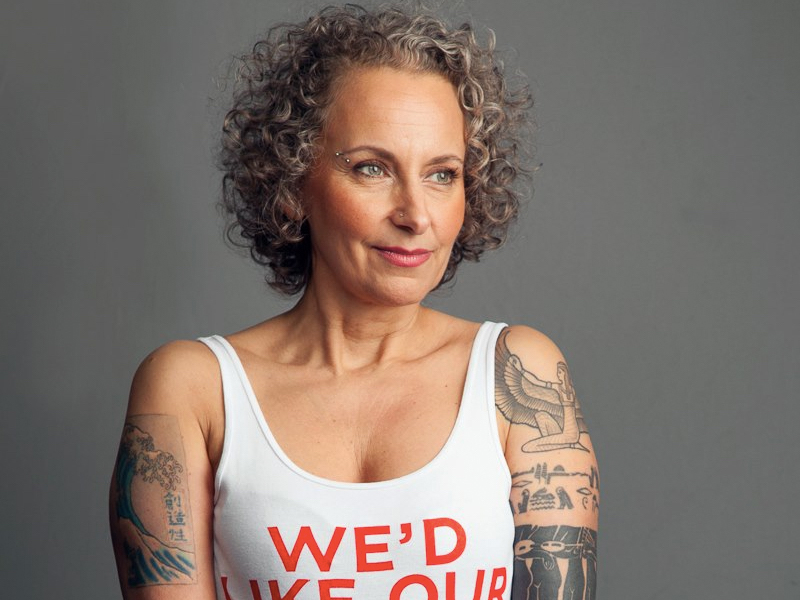 I am very hopeful for 2016, I think it holds great promise for a more ethical fashion industry, one that is small and diversified, not big and branded. One populated by emerging designers, artisans and craftspeople around the globe, each with their own unique voice and character, each making their individual contribution to a more ethical fashion industry.
I am very hopeful for 2016, I think it holds great promise for a more ethical fashion industry, one that is small and diversified, not big and branded. One populated by emerging designers, artisans and craftspeople around the globe, each with their own unique voice and character, each making their individual contribution to a more ethical fashion industry.
“Fast fashion” and over-consumption are becoming highly unfashionable. It’s far more chic to invest in well-made, well-designed clothing made ethically. Pieces you can cherish, that bring pleasure, and support local economies, emerging designers, and craftspeople, and tell the stories of every hand that went into the making. I think the era of the mega-brand is coming to an end.
The model of constant growth and quarterly reports to investors showing ever increasing sales is simply unsustainable, and not the only measure of success. An ever-increasing number of designers are measuring success on the quality and longevity of their work, on their work-life balance, on reducing their impact on people and planet, while more and more buyers are finding value in knowing the provenance of what they purchase, not just country of origin, but the actual faces of the farmers, spinners and sewers, the names of those that touched their garment before them. Really beautiful design can never be made at the cost of people or planet.
DEANNA CLARK (FASHION COMPLIANCE ATTORNEY; ADJUNCT PROFESSOR, FASHION INSTITUTE OF TECHNOLOGY)
Whereas “conscious consumerism” was a barely known term few of us were privy to 20 years ago at University of California. Berkeley, in 2015, I was pleasantly surprised to hear a notable increase in the use of the term by New York City consumers. This points to what I predict will be a continued rise in conscientious decision making around consumption choices for 2016. From clients to peers to the programming seen in the fashion schools, the expansion of ethics in the eco-fashion dialogue has likewise been on the rise. Indicators point to new heights as more people join the conversation and broaden the message that accompanies eco-fashion.
FRANCISCA PINEDA (CREATIVE DIRECTOR, BHAVA; FOUNDER, ETHICAL FASHION ACADEMY)
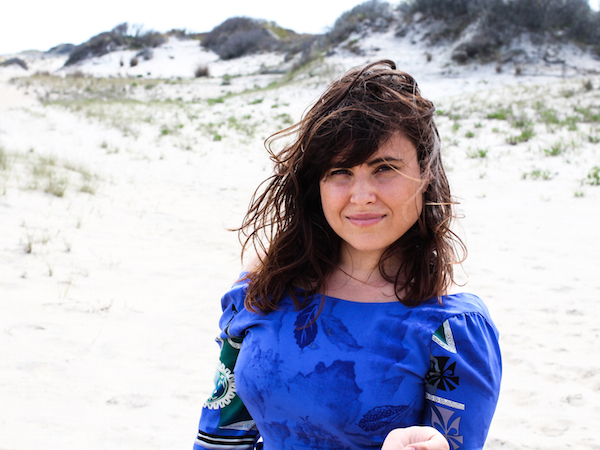 Thanks to 2015, the world has a slightly better understanding of the issues surrounding ethics and sustainability in the fashion industry. This has inspired many new projects and collaborations in all areas. Innovation and inspiration is everywhere, and there is an air that anything is possible. Creativity and determination abound but we must never forget that long-term value and endurance is key.
Thanks to 2015, the world has a slightly better understanding of the issues surrounding ethics and sustainability in the fashion industry. This has inspired many new projects and collaborations in all areas. Innovation and inspiration is everywhere, and there is an air that anything is possible. Creativity and determination abound but we must never forget that long-term value and endurance is key.
In 2016, sustainability must equate to long-term thinking in every way.
Tedious branding and storytelling will evolve towards a more subtle and intuitive approach that will shift perceptions of luxury.
True luxury is the reassurance that all desires, concerns, and requirements have been addressed, even before having to think of them for oneself. Tireless attention to detail and preservation must be considered in a way that is relevant and accessible to the consumer.
In 2016, in order for sustainable fashion to move forward and maintain the momentum we all hope to see, customers need to feel and experience the value. How brands choose to tackle quality and experience will be the differentiating factor in an increasingly fragile ecosystem where long-term thinking will prevail and short-cuts continue to prove volatile.
CARMEN ARTIGAS (SUSTAINABLE DESIGN CONSULTANT)
We’ll start addressing toxicity in the textile and apparel sector through green- chemistry initiatives that seek to regulate or eliminate the use and generation of hazardous substances and processes. Eventually consumers will learn to identify and avoid certain fabrics and chemicals when selecting clothing. Cultural appropriation will continue be a hot topic and the public will be less tolerant toward designers that copy other cultures.
On the other hand, we’ll see an increase in traditional textile production methods and ancient designs will be revived and reintroduced to village artisans by contemporary entrepreneurs. Emotional brands will increase their presence and distinguish themselves by their karmic business principles and sensitizing the audience to their sourcing and manufacturing processes.
SHANNON WHITEHEAD (FOUNDER, FACTORY45)
I predict that 2016 is going to be an even bigger year for the independent design movement. Never before in the history of fashion has it been easier to start an independent clothing label. Thanks to crowdfunding, e-commerce and social media, an aspiring entrepreneur no longer needs hundreds of thousands of dollars or celebrity endorsements to get off the ground.
Even better? There’s a growing list of resources at our disposal to create fashion in a sustainable and ethical way. It’s becoming increasingly apparent that any fashion business can be a sustainable one and that belief will continue to be adopted in the new year. I’m excited to see how the industry continues to change thanks to indie designers across the globe.
JILL HELLER (PROPRIETOR, THE PURE THREAD)
In 2016, people will continue to come together to talk about the issues involving fashion and sustainability—not only activists and academics but also manufacturers and consumers.
- The Copenhagen Fashion Summit, the world’s largest conference on sustainable fashion, is scheduled to have its fourth gathering from May 10 to 12.
- The 2015 International Climate Change Agreement, which comes into effect in 2020, will see significant investment and steps forward from the organizations that are the biggest impactors.
- Pantone 2016 color trends reveal a blending of two shades: pink rose quartz and serenity light blue, a symbolic representation of all colors, all genders, all voices, depicting the spirit of the times.
- The role that fashion plays in self-actualization is key. People are always going to need fashion so it’s a question of “How can we make people pride themselves in the fact that the clothes they wear are intrinsically sustainable?” I’m very optimistic that the more we talk about these things the greater the positive change we can bring. Even if one person changes their opinion and purchasing habits, that’s one person more.
- Fashion brands will make transparent production central to its philosophy. Just as the slow-food movement prizes practices that are gentle on the land and the body, a wave of labels and retailers are focusing on socially responsible methods.
- Important films will be Fabien Cousteu’s Mission 31: filmmakers, activists and scientists break new ground in ocean exploration in order to help people protect, connect, and understand the ocean. Also, The True Cost, a feature-length documentary that explores the impact of fashion on people and the planet.
- Books on my shelf that I’m looking forward to reading in 2016 include What Women Want: The Science of Female Shopping by Paco Underhill, Made to Stick by Chip Heath and Dan Heath, Big Magic: Creative Living Beyond Fear by Elizabeth Gilbert, Simplicity by Nancy Braithwaite, and Recycled Home by Mark and Sally Bailey.
AMY DUFAULT (WRITER; CONSULTANT; SOCIAL MEDIA AND CONTENT COORDINATOR, PRATT INSTITUTE’S BROOKLYN FASHION AND DESIGN ACCELERATOR)
As a consultant and sustainable-apparel writer, I am forced to read a lot. My work with natural dyer Botanical Colors settles me into the nontoxic color and farming world; Evrnu plops me right in the middle of a buzzing world of textile- and cotton-recycling, closed-loop production, and reuse. while the Brooklyn Fashion + Design Accelerator serves as a very human platform to bring in people virtually, as well as physically, to hammer out challenging things like collaboration, traceability, and harder ethical questions related to the apparel industry.
I still believe that storytelling will save the world, but I’m interested in seeing how all three worlds are crossing over and into each other this year. My prediction, based on work with all three companies is that we’re going to see a lot more brands taking on responsibility, thanks in part to more companies taking on the risk to be better and others not wanting to take the risk of falling behind. This new wave of responsibility has me hopeful.
Source: Ecouterre.comPhoto: Shannon Whitehead, founder, Factory45
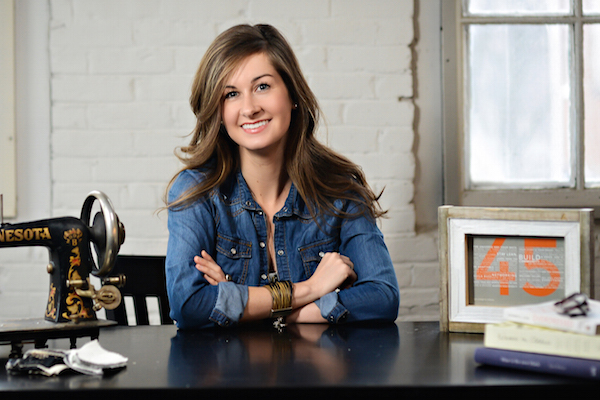
HIRE ME if there r jobs out there in any Eco company.